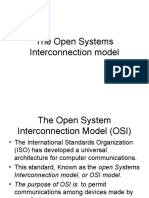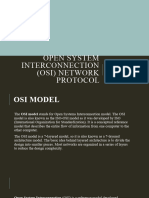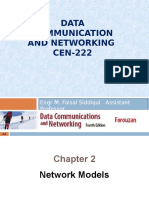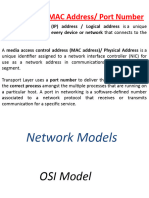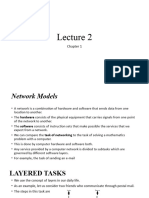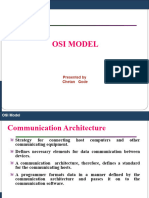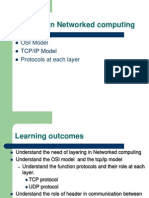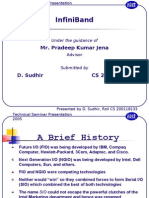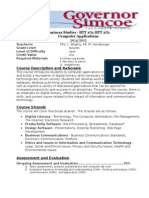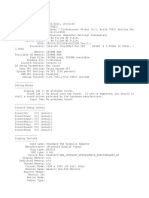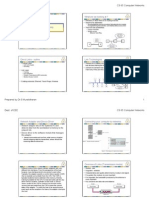0% found this document useful (0 votes)
52 views5 pagesOSI Model
The OSI model is a 7-layer architecture for network communication created by ISO to standardize network protocols. Each layer has a specific purpose, with layer 1 being the physical layer and layer 7 being the application layer. Data moves down the layers at the sending device and up at the receiving device, with each layer adding its own headers and implementing its functions. The OSI model aims to allow devices from different vendors using different operating systems and hardware to communicate over a network in an open way.
Uploaded by
Wasif QaziCopyright
© © All Rights Reserved
We take content rights seriously. If you suspect this is your content, claim it here.
Available Formats
Download as PDF, TXT or read online on Scribd
0% found this document useful (0 votes)
52 views5 pagesOSI Model
The OSI model is a 7-layer architecture for network communication created by ISO to standardize network protocols. Each layer has a specific purpose, with layer 1 being the physical layer and layer 7 being the application layer. Data moves down the layers at the sending device and up at the receiving device, with each layer adding its own headers and implementing its functions. The OSI model aims to allow devices from different vendors using different operating systems and hardware to communicate over a network in an open way.
Uploaded by
Wasif QaziCopyright
© © All Rights Reserved
We take content rights seriously. If you suspect this is your content, claim it here.
Available Formats
Download as PDF, TXT or read online on Scribd
/ 5

